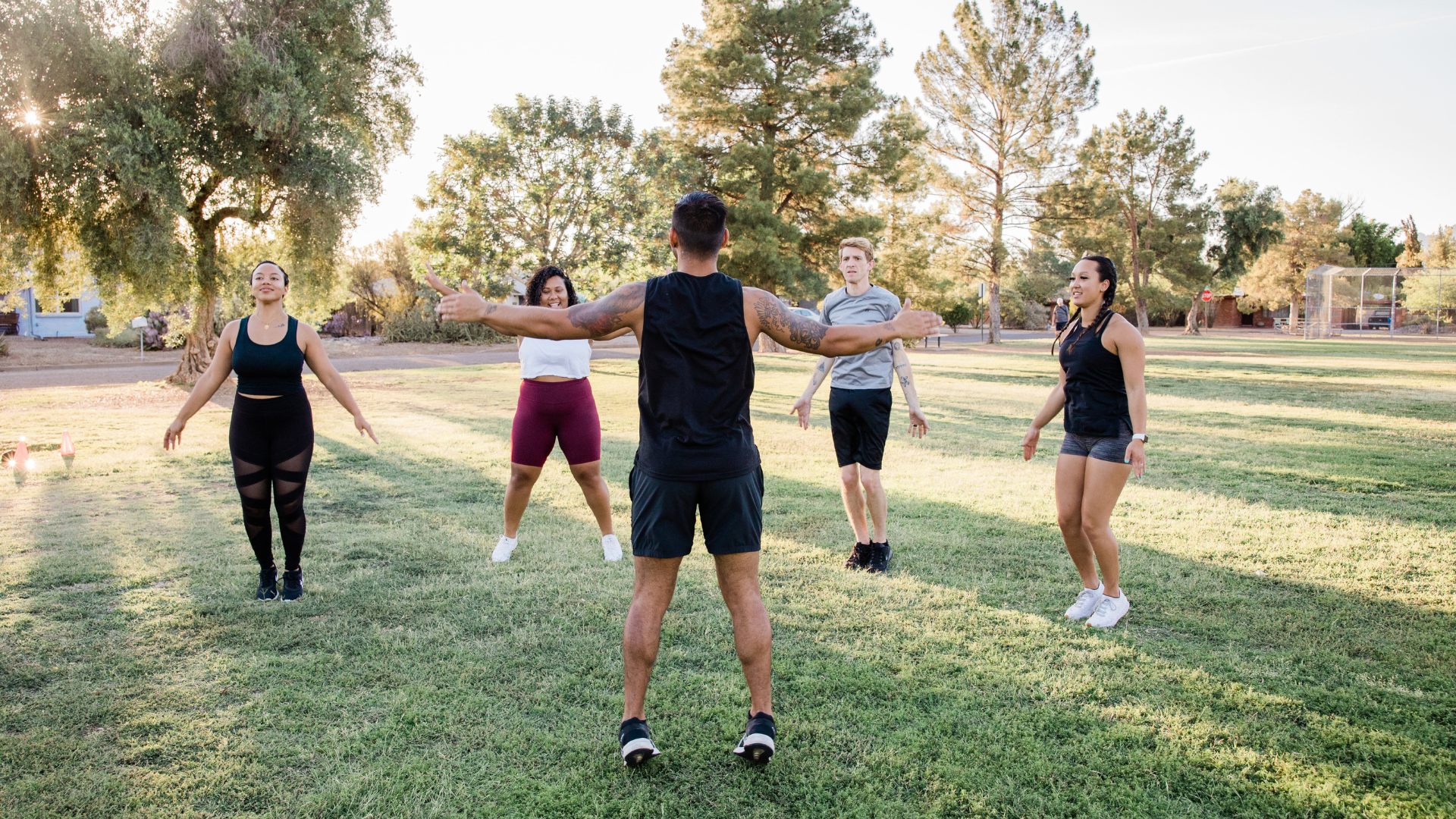Dealing with consistent pain in your body is no joke.
When acute pain turns into chronic pain, people can feel like their lives are completely changed for good and they will never know what it is like to feel relief again.
Whilst chronic pain can cause a stop to many people’s lives as well as change their entire outlook on life, there are ways that people can reduce chronic pain and manage it a lot better. The first step is often to visit a pain management clinic to get diagnosed properly and get the appropriate treatment. After that, one can indulge in various exercises to effectively handle their pain on their own.
Starting to exercise doesn’t just boost physical health; it’s a game-changer for your mental well-being too. But, don’t forget the downtime-enough recovery is vital; otherwise, your body might end up feeling sluggish.
For some extra relaxation and pain relief, here are a couple of things you can do. Firstly, practice deep breathing and stretching exercises; they’re like a mini-vacation for your muscles, helping them chill and reducing stress. Secondly, give your muscles some love by massaging them gently-grab a foam roller or use your hands. And also, consider tossing in some natural supplements like delta 9 gummies as they’re known to tackle inflammation and ease pain.
In today’s article, let’s dive into the world of exercises that work wonders for managing pain. We’ll also unravel the perks of doing exercise as well as getting proper recovery for chronic pain relief. Stick around for insights on the best exercises and the numerous benefits they bring to the table when it comes to keeping pain at bay.

Why Should You Exercise For Chronic Pain?
You may think that doing any form of exercise would exacerbate your pain and cause you to feel even worse about yourself.
Although some exercises can do that for people who have certain debilitating pain, i.e. fast and high-impact training, there are a whole slew of benefits when it comes to doing certain movements and physical activity for the body.
Now, we’re not saying it won’t be a little difficult at first. If you’re new to exercising, then it will take your body a little time to get accustomed. Plus, you’d have to follow a recovery routine that consists of rest and proper sleep. That may prove to be hard, considering your chronic pain, but some cheapweed products could be of use there.
The larger point is that when you suffer from chronic pain, it can be difficult to get yourself motivated to do anything, however, understanding the benefits of doing exercise and how it can help you with producing less pain, just may be the thing that gets you moving around and developing on your core strength.
Keeps Your Muscles Strong
Having strong muscles is beneficial for your spine.
Taking care of your spine means that you can prevent stress and strain injuries.
Another important benefit is it helps you support your weight throughout the day.
Strengthening your muscles protects your bones and joints whenever you are doing an exercise or movement that has an impact on your body.
If you have weaker tissue then that can mean that your body is more susceptible to damage which will cause pain in your body.
Listen to Your Body
Whilst exercise can help support your muscles, doing too much can have the opposite effect on you which has the potential to cause you a serious injury if you do not take the time to do your exercises properly and keep your form intact.

It Helps Maintain a Healthy Weight
Excess weight on your joints can cause chronic pain and worsen the symptoms.
Your body has to work extra hard to function, which puts a lot of strain on specific places.
For example, if you had back pain problems before that flared up at certain times, it has the potential to develop into chronic low back pain which can significantly affect your day to day, meaning that if you have a manual job, you might not be able to carry on with it.
It Can Benefit Your Mental Health
Dealing with chronic pain is not something that just affects the body, it can cause you to feel depressed, anxious, and stressed almost daily.
Just doing some exercise each day, whether it be walking, jogging, cycling, etc., can have a positive effect on the mind and keep you feeling good when you are struggling.
Getting out into the fresh air and doing regular movement can stave off those bad feelings and stop you from dwelling too much on what is going on in your body.
Take it Slowly
It is important to remember that you should never force yourself to exercise if the pain is too bad, this can make things worse and it won’t help your anxiety/stress either, so always take note of how you feel and only do what you can.

The Best Exercise For Chronic Pain
There is no ‘one’ exercise that can help you with chronic pain, but rather a mixture of exercises.
You may find that one exercise benefits you most and that is the particular one you stick with, but there are multiple that we will dive into now so you can incorporate it into your regular exercise routine.
Strengthening Exercises
Strengthening exercises are also known as resistance training/weight training.
These types of exercises are designed for you to add weight to your muscles so they are able to adapt and grow stronger which should protect you.
When you commit to regular strength training, you can find that you do not lose as much lean muscle as you would do if you were sitting around doing nothing.
How Many Times a Week Should You Do Strength Training?
It would be a good idea to do these exercises 2 to 3 times a week to help you grow and improve your muscle strength.
You can then reduce that to once a week for maintaining that strength.
Strength Exercises
- Pull-ups
- Squats
- Deadlifts
- Lunges
- Bicep Curls
- Glute Bridges
You may want to incorporate free weights into your regime so you can keep your muscles going and give them something to be resistant against.

Aerobic Exercise
This is also known as endurance. It is an activity that increases your breathing and heart rate.
The goal of doing these types of exercises is to keep your circulatory system as healthy as possible.
Your overall fitness should be improved with these exercises to help you reduce the risk of chronic diseases such as heart disease, stroke, and diabetes.
How Many Times a Week Should You Do Aerobic Exercise?
You should be doing these practically every single day.
You don’t have to have them all be intense workouts, but you should focus on doing around 2 days a week of higher intensity.
Low-impact exercises can have a good effect on the body, but you need to switch it up as much as possible to give your body that variety and not keep it staying at one level.
Endurance Exercises
- Brisk Walking
- Swimming
- Running
- Dance
- Jump Rope
- Cycling
When doing these exercises, you should focus on increasing your heart rate as well as your breathing.

Gentle Stretching
Whether you are doing home exercises or you are in a gym, regular stretching will help with keeping your body flexible.
This can have an impression on other exercises that you do, making them easier for you to move around without putting a strain on your muscles.
How Many Times a Week Should You Stretch?
You should aim to do stretching for around 10 to 15 minutes a day. This will help you with your pain and stop you from stiffening up.
Types of Stretches
There are two types of stretches you should look at to keep your body limber and ease the pain in your body.
Dynamic Stretching –
This is normally done just before exercising. It involves actively moving your muscles so they will not cease up when getting into your exercise routine.
Static Stretching –
For these stretches, you should be focusing on holding stretches for 10-30 seconds. You would do these after exercising.

Core Training
When you work out your core, you are focused on working out the musculature of your midsection.
These include your lower back, hip flexors, around your spine, abdominal muscles, and glutes.
This will help you move your joints without there being any pain.
How Many Times a Week Should You Do Core Training?
After you have done endurance training, you should then focus on core training.
This should be happening from 2 days to 3 days a week.
Core Exercises
- Plank
- Crunch
- Rotational Exercises
- Reverse Crunch
- Bear Crawl
- Russian Twist

Yoga
To help you increase flexibility and stave off discomfort from your chronic pain, you may find that yoga is a great reliever for you.
Some people will turn to exercises in lieu of medicine when it comes to dealing with chronic pain management, however, you should never stop any medication that you are on before speaking to your doctor first.
How Many Times a Week Should You Do Yoga?
You can do yoga whenever you want to, but, they do say that between 2 and 5 days per week is the best for people.
Just make sure that you rest properly and know when you have had enough.
Practice makes perfect but you should not suffer if you are finding some of the moves hard to do.
Yoga Poses
- Hand Yoga
- Foot Yoga
- Seated Twist
- Modified Downward Facing Dog
- Standing Side Stretch

Conclusion
Chronic pain is incredibly hard for people to deal with.
Not only do they find that their daily life is impacted by chronic pain, but the persistent pain can also cause them to lose their job and completely change who they are.
If you are someone who is dealing with serious pain it is essential that you speak to your doctor to see why this is happening and what you can do to support yourself with the next chapter in your life.
No one should be dealing with this alone, there is always help out there for people who are in need.




